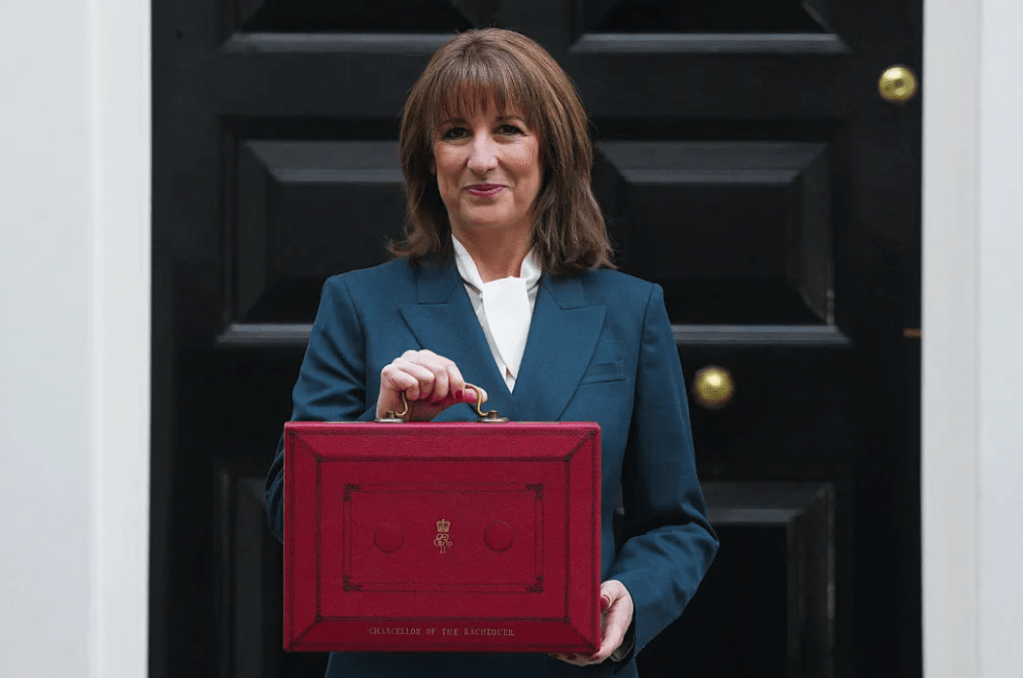From Henry James and T.S. Eliot to Wallis Simpson and (albeit briefly) Taylor Swift, US expats have had a long love affair with London. But over the past year the number of Americans – overpaid, what with their favourable exchange rate, oversexed, possibly, and certainly over here – has been escalating fast.
In 2024, 6,100 Americans applied for British citizenship, the most since records began – in what’s been dubbed the ‘Donald dash’. And it seems it’s the wealthy who are leading the charge. According to estate agent UK Sotheby’s International Realty, four in ten of the $15 million-plus properties sold in the British capital last year went to US buyers. Transatlantic househunters have stepped in to fill a gap left by verboten Russian buyers and Middle Eastern high-rollers, who are increasingly looking to invest closer to home in Dubai.
But it does raise the question of why Americans are so enthusiastic about our high property prices, our creaking public transport network and our long, grey winters when they could escape Donald Trump’s America just as well by living la dolce vita in Rome or succumbing to the romance of Paris. The answer, it seems, is that we have the restaurants, theatres, galleries and castles they adore, a common language to make everyday life easier and the strength of the dollar against the pound to help them cover our sky-high prices.
Half of the London homes Jessica Bishop, an adviser at DDRE Global, has sold in the past 12 months have been to Americans, and she thinks our USP is old-world charm. ‘They love the history of London,’ she says. ‘It is incredibly charming and romantic to live in a house that was once home to members of the royal court such as in Belgravia and Knightsbridge, and to have such a close connection the monarchy, which they idolise.’
When Jordan Cracknell moved from her native New York to London it was for a different kind of romance. She met Olympic rower James Cracknell while studying for an MBA at Cambridge in 2018, and when the course was finished she moved in with him. The couple, who married in 2021, now live in Fulham, south-west London. But Cracknell does believe that London’s history is catnip to citizens of a nation which has yet to celebrate its 250th birthday and where a Victorian house is considered a landmark. ‘It is just really fascinating to see these incredibly beautiful buildings which were built in the 1400s,’ she says.
Cracknell, 39, who works in finance, has also fallen for London’s green spaces – both the public parks and the beautifully tended private gardens of friends. And she loves the pubs. ‘It is just a really great sense of community which we don’t have in the States where we are not even allowed to drink outside our pubs,’ she says. ‘The British have been very welcoming and really warm.’
London also has a strong expat community to blend into – the 16,000 members of Facebook group ‘Americans in London’ swap intelligence on where to buy saltwater taffy or find a lawyer to draw up a prenuptial agreement. In fact Cracknell’s only criticisms of life in London are purely functional – how early supermarkets close on a Sunday and the odd way bathroom light switches are placed outside the door. But these irritants have not been enough to persuade her to return to the US. ‘I am going to get citizenship next year,’ she says.
‘It is just a really great sense of community which we don’t have in the States where we are not even allowed to drink outside our pubs’
For some Americans, London also represents a comparatively safe haven. ‘Crime and the gun laws in America have underpinned many of our recent clients’ decisions to make the move to London,’ says Will Watson, head of The Buying Solution. ‘The current political landscape in the US is uncertain and as such we’ve got active searches from American clients who feel strongly that having either a permanent or second home in prime London can offer a sense of security.’
Marc Schneiderman, director of Arlington Residential, agrees that Trump 2.0 is driving the current boom. ‘We have sold to two US families in the past two months who have been concerned and uncomfortable with the political situation and while it is not the sole reason for moving to London, they have cited it as perhaps a tipping point,’ he says.
The type of property these buyers want depends on their individual circumstances and their budgets. Roarie Scarisbrick, a buying agent at Property Vision, draws a distinction between two different tribes. On one side are the west coast and Silicon Valley ‘entrepreneurial tech types’ who are relocating lock, stock and barrel to Europe to grow their businesses and want large family houses in Kensington and Chelsea, St John’s Wood or Hampstead. On the other, ‘there is also an old-school east coast cohort who have made a lot of money recently and see London as a key part of a global property portfolio,’ he says. ‘This crew are looking for very central, pied-a-terre style properties in super-prime locations. Chelsea, Belgravia and Marylebone are the obvious magnets here.’
But whichever coast they come from and whatever new neighbourhood they choose, Bishop can sum up her American buyers’ requirements in five words: period facades and mod cons. Because while glorious historic homes can be found all over Europe, most Americans don’t actually want to get too involved in the day-to-day privations of creaky floorboards, leaky sash windows, smoking fireplaces or – horrors – having to queue for the bathroom.
The secret weapon of London’s luxury housing market is that, within Europe, it is the one which has most enthusiastically embraced Americanisation. His-and-hers walk-in showers, at least one bathroom per bedroom and air conditioning are now standard in high-end homes, all wrapped up in the shell of an original historic house. You can get the look without the inconvenience – which is something you will struggle to find across mainland Europe.
‘A notable trend among American buyers is their preference for historic properties, particularly those that have been stylishly modernised for contemporary living,’ agrees Simon Barry of Harrods Estates. ‘The most sought-after homes are those that blend the classic charm of a historic facade with modern amenities.’







Comments